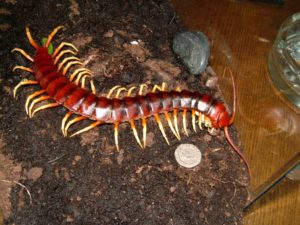Wildlife in Australia is one of the most diverse in the world. A mix of exotic and native South Australian animals roam the air, land and sea — some are cuddly, and some are deadly when approached. Don’t make the mistake of assuming these creatures are only found in the Outback, as some of these dangerous animals on Eyre highway are also known to lurk in cities! Here are the top South Australian animals you should watch out for:
- Brown Snakes
Brown snakes are some of the most dangerous snakes Down Under. Aggressive and fast, these snakes are responsible for over half of all snake-related deaths in Australia. While brown snakes are among the most lethal snakes in the world, they’re also proven to be useful — they help eliminate house mice and other pests in SA. They’re commonly found in grassland areas, so be cautious when you go on bushwalks alone!
- Great White Shark
This legendary shark earned its name from its universally white underbellies, and has a very powerful tail that can propel it through to water up to 15 miles per hour. Great whites are also enormous — growing up to 4.6 metres, their slate-gray upper bodies make them easier to blend with the coastal sea floor.
There is currently no reliable data on the great white’s population, but scientists agree that they are endangered because of overfishing and gill net accidents. Watch out for white pointer sharks whenever you’re taking a dip in one of the beaches in Eyre peninsula.
- Blue-Ringed Octopus
Planning to dive in one of South Australia’s beaches? Steer clear of blue-ringed octopuses, which are abundant in the area. Docile yet deadly, the dark brown-coloured octopus displays vivid blue rings when provoked. When threatened, the blue octopus can bite and inject a lethal venom, which paralyses the victim’s respiratory system.
Fortunately, there have been no reported casualties from blue-ringed octopus bites in South Australia. Department of Environment and Heritage Marine Parks Officer Andrew Burnell warns, “The only time you are going to get into trouble is by picking them up and playing them, and putting the octopus in your hands.” To avoid getting bitten by this octopus, be extra careful when picking objects up along the coast. Marine experts have claimed that as nocturnal creatures, blue-ringed octopuses like to hide in razor fish shells, scallop shells and even old soft drink cans.
- Giant Centipede
Giant centipedes are so dangerous they can even bite and feed on the average-sized snakes in Australia! These gigantic centipedes ranges in colour from dark blue-green-brown to orange-yellow, with a size range for 16 centimetres. They can be found in both dry and moist habitats in Eyre peninsula, hiding in sheltered places such as soil, bark, logs or leaf litter.
Giant centipedes usually attack when disturbed or handled. The venomous bite causes severe pain that lasts for days, but can be relieved somewhat by applying ice packs on the wounded area. There are no records of fatalities from giant centipedes, but adventurers should still avoid physical contact with these creatures.
Proceeding with caution whenever you encounter an unfamiliar creature is a general rule that every explorer in South Australia should follow. Information is your first aid — make you sure you have also conducted research on how to handle these deadly creatures in case of accidents or attacks. Preparation aside, the question remains: are you brave enough to explore the wilderness of Australia?
Stay safe during your holiday in South Australia by stopping by the Nullarbor Roadhouse. Contact us to get practical tips and advice when facing the animals of the Australian wild.
References:
- Williamson, Brett. “Beauty that kills: S.A.’s blue-ringed octopi [sic].” ABC Adelaide, 17 December 2009. Web. 12 October 2015.
- “Giant Centipede, Ethmostigmus rubripes.” Australian Museum, n.d. Web. 12 October 2015.
- “Huntsman Spiders.” Australian Museum, n.d. Web. 12 October 2015.
- “Most Dangerous Animals of Australia.” Off the Path, June 2011. Web. 12 October 2015.





